
I really like lists. The way my brain works means that I cannot function until I have exhausted all the avenues of research, compiled the findings, and then analysed the data. It makes shopping for food a bit of a pain, but when it comes to car stuff it is a real asset.
That’s why when I was asked to make a list of my top 10 favourite turbo Porsches my face lit up. A list, on Porsches, with turbochargers. What’s not to like? The only snag is choosing just 10. Porsche has one of the richest back catalogues when it comes to strapping turbos on things.
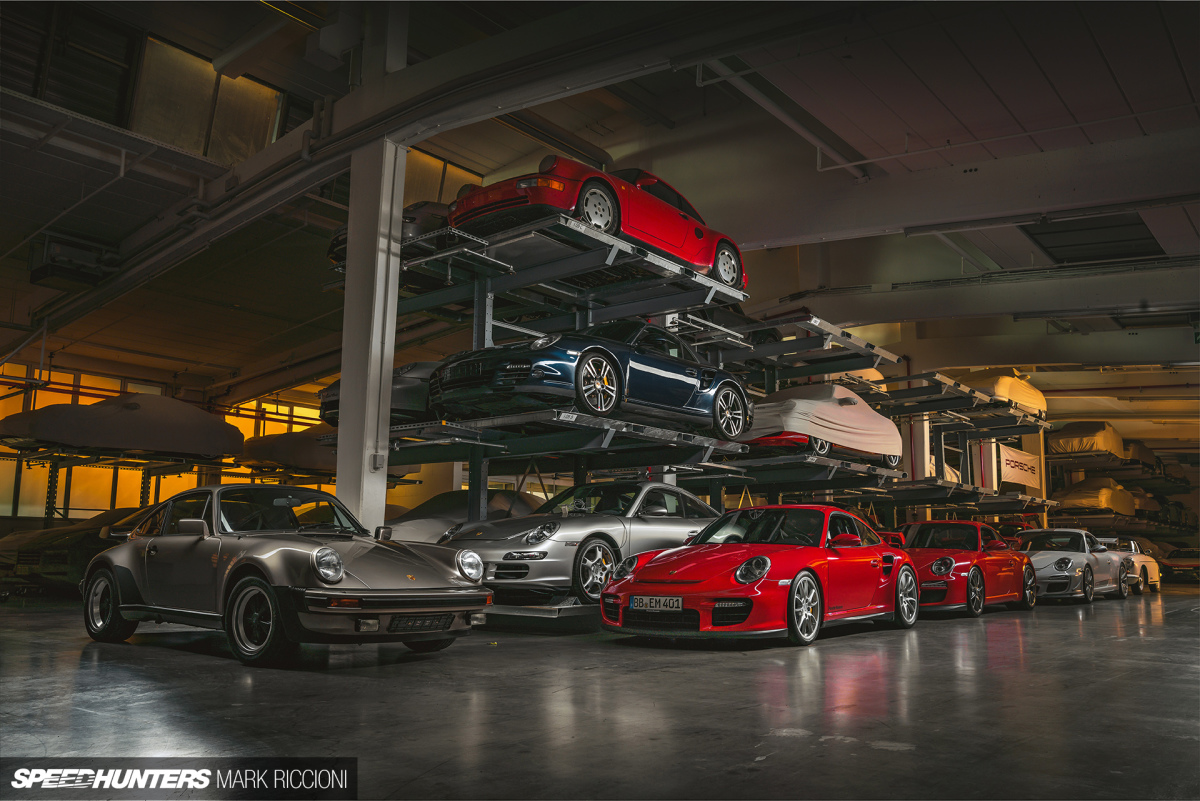
Thankfully I’ve been down this route of research before. When deciding to purchase my own 911 Turbo I ended up travelling down a wormhole, reading about the history, watching old archive road tests, and generally being an absolute pest on the subject. It’s quite incredible how much time you can allocate to these quests while ignoring more pressing ‘real life’ assignments such as feeding cats, fixing fences, or simply going to bed.
Porsche has come a long way since the pioneering 4,494cc ‘912/50′ 12-cylinder turbocharged engine that powered the 917/10 Can-Am spider. It’s astonishing to think that it was first tested in 1971 – that’s 49 years at the very leading edge of turbocharged engine design. Not bad going really. All turbo Porsches can trace a lineage back to a moment where it became clear that bigger was not in fact better – efficiency ruled.
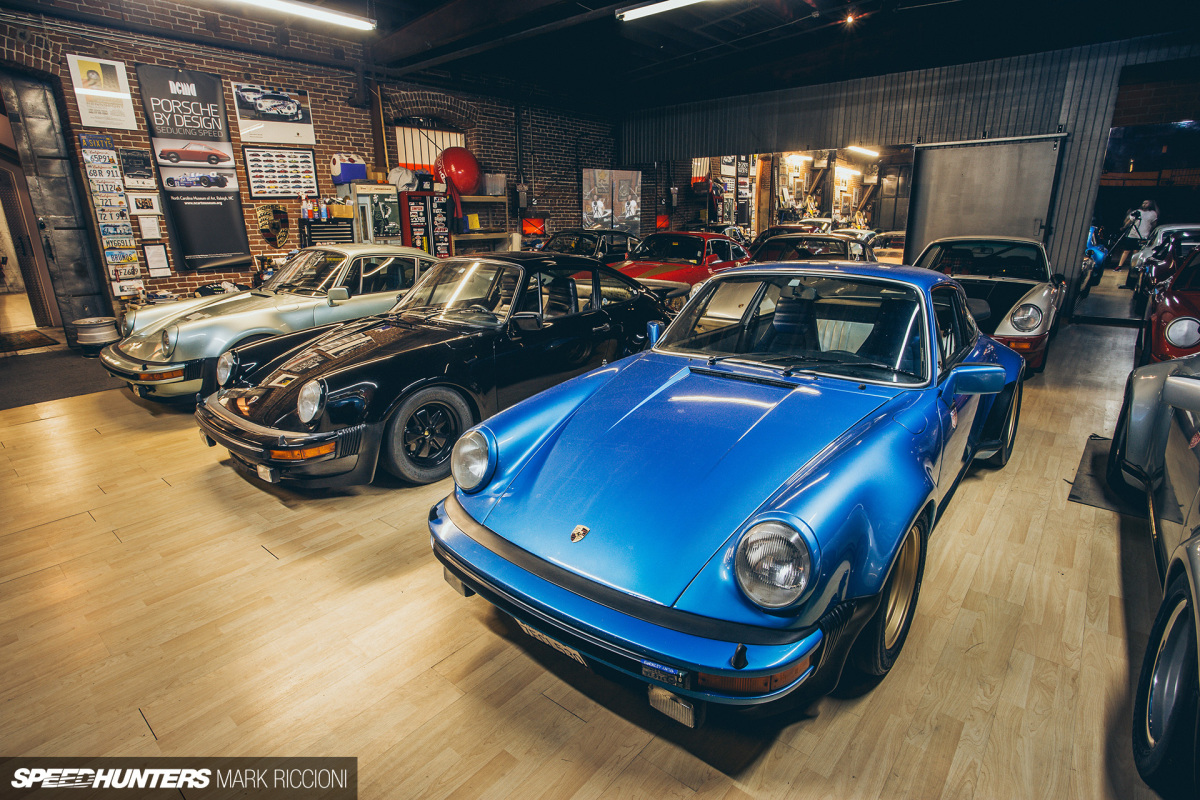
To battle 8.1-litre McLarens, Weissach developed a giant 755bhp, 6,543cc flat-16 engine, but it was obvious that they were chasing diminishing returns and increasing complexity. Turbocharging the flat-12 proved a much more effective solution. Initially it produced 850bhp, but later it was rumoured to be capable of 1,400+bhp in the 917/30. Lighter, less complicated, more reliable, and seemingly infinitely powerful, the Porsche turbo era had definitely dawned.
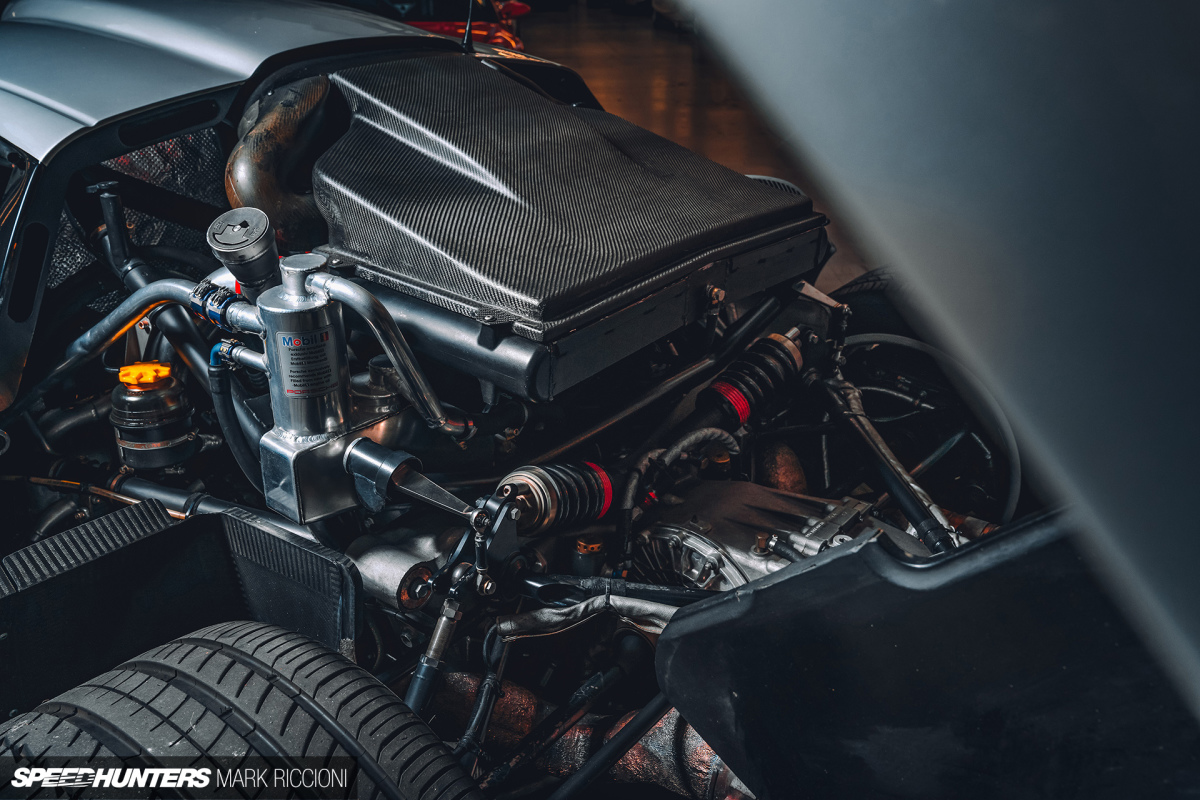
I’ve spent countless evenings straining my eyes over old forum threads, interrogating Google and avoiding the world. Here’s 10 of the best turbo Porsches summarised for you:
1) 917/30
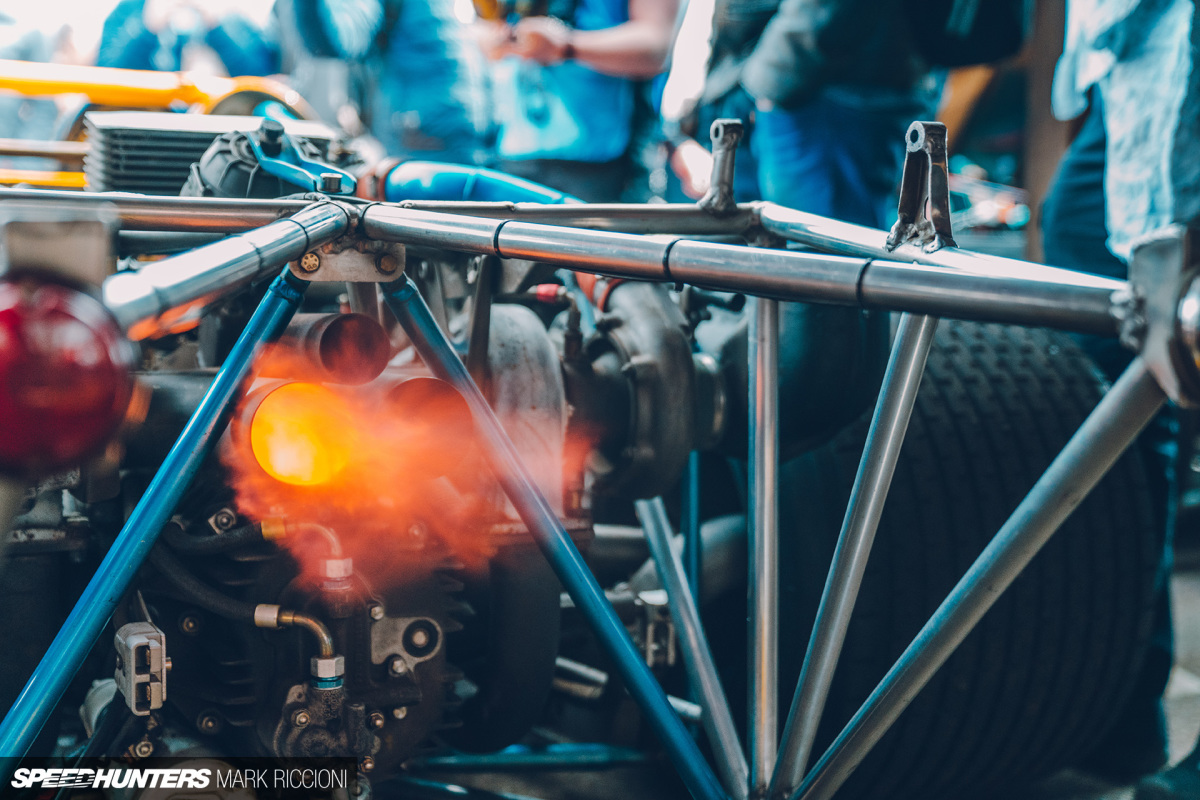
The 917/30 represented the highest evolution of the legendary Porsche Can-Am Spyder. Stability could be increased by elongating the chassis to create a 90.6-98.4-inch variable wheelbase, while power came from the 912/52 engine, a twin turbocharged 5,374cc flat-12. It made 1,100bhp in ‘regular’ tune, often hit 1,200bhp, and was said to exceed 1,400bhp. This is in the early ’70s, without an intercooler. It’s mind-boggling stuff.
This car also went on to prove the Porsche intercooling concept. After Can-Am racing dwindled, Roger Penske encouraged Porsche to develop the car to take the Talladega track speed record. In order to improve the drag coefficient of the car and improve the top speed, cooling was compromised. Twin intercoolers were installed to compensate, and in addition to increasing engine longevity, unlocked 40 more horsepower. On the day of the record run the intercooler ducts on the back of the tail were crammed with ice and Mark Donohue achieved an average of 212.12mph on the banked oval course.
2) Carrera RSR Turbo
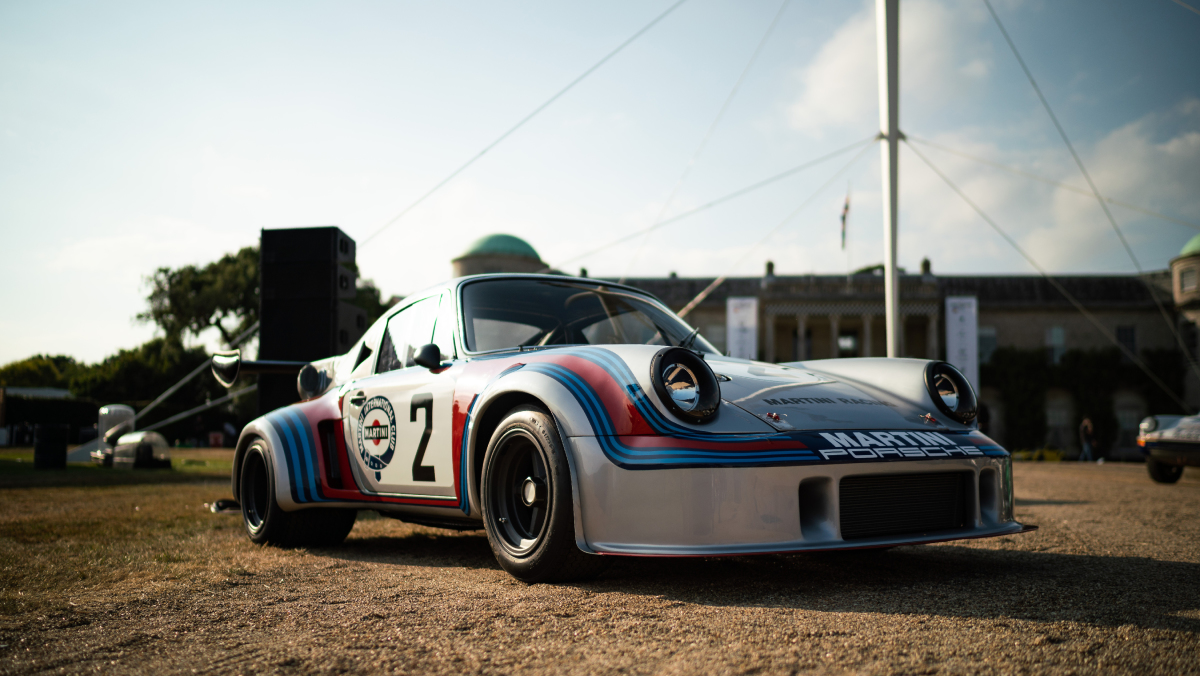
The 1973 oil crisis meant motorsport had to evolve. I won’t go into the reasons for the oil embargo at this time; that’s another topic on its own and I’ll let you Google it yourself. However, this shift in world politics and ‘street level’ fuel shortages demanded that fuel consumption at all levels had to fall, including in motorsport.
There was a very distinct ‘before’ and ‘after’ mark in the historical timeline. Gone were the big-engined, thirsty race cars of the early ’70s; more efficient cars replaced them. The SCCA (Sports Car Club of America) introduced fuel consumption restrictions in Can-Am and a 3.0-litre engine capacity limit.
A 1.4x multiplication factor was added to turbocharged cars, so the Carrera RSR Turbo made do with a capacity of just 2.1-litres in its first incarnation with the 911/78 flat-6 turbocharged engine. Still enough to provide 450bhp at 8,000rpm in a car that weighed around 800kgs.
The intercooler sat proud of the engine compartment and into the free air passing under the huge wing – a configuration we now know as the ‘whale tail’. Numerous iterations of this design were tested to optimise the airflow and a ‘boxed off’ design worked best. It seemed as though everything was happening at the back of this car and with a 30/70 rear weight bias, enormous tyres were needed to harness the power.

By 1974, the Carrera RSR Turbo made 500bhp and had 15×10.5-inch front wheels and 15×17-inch rears. This made for a silhouette like no other, necessary to cover 245/575-15 front tyres and whopping 340/575-15s in the back.
3) 3.0 911 Turbo/Turbo Carrera (930)
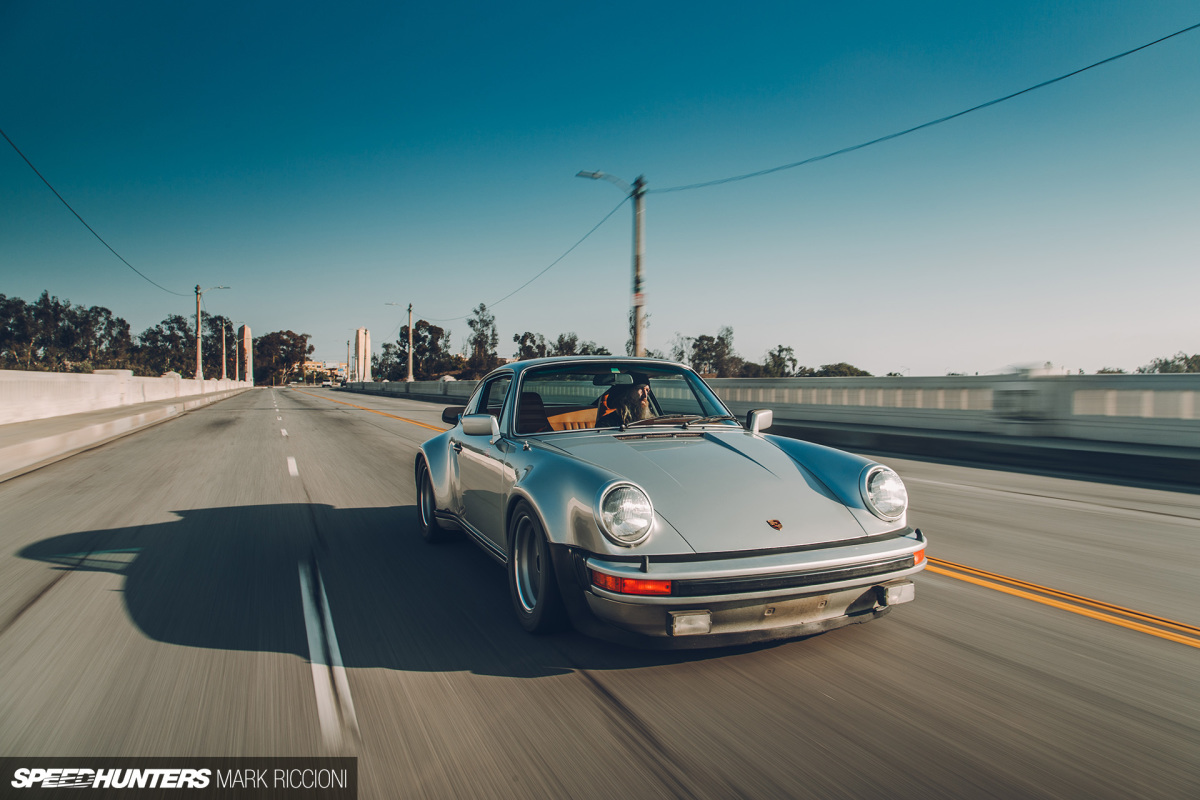
First shown at the Frankfurt International Auto Show in 1973, the ‘Turbo Carrera’ is a defining milestone in Porsche history, let alone turbo Porsche history. It marks the jump from race to road for turbocharger technology.
It’s important to note that Porsche was not the first to turbocharge European series production with success. And before you say it, nor was BMW with the 2002 Turbo, although you could say that the 911 Turbo is the first real turbocharged ‘sports car’. Something that you might not be so familiar with however is the work done by Swiss genius Michael May. At this point it’s also worth remembering the pioneering designs by GM with the Chevrolet Corvair Monza and Oldsmobile Jetfire, both from the early ‘60s, but for the sake of this article let’s keep things German…
No stranger to Porsche, May raced a 550RS Spyder with an elevated wing above the driver’s head in the mid ’50s. It was short-lived, however, and was outlawed after other teams complained that it reduced visibility for drivers following him. It didn’t stop him innovating though and May later turned his interests to turbocharging Ford Capris for the aftermarket.
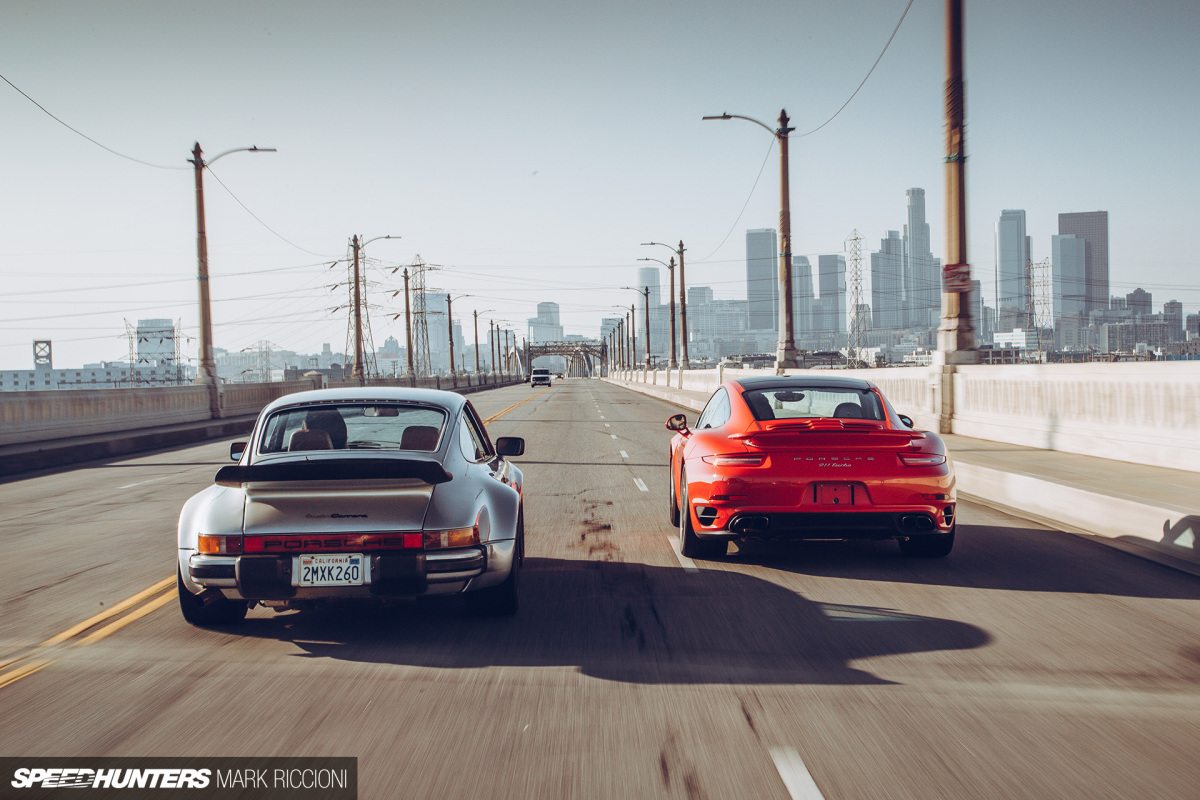
For 1970, May combined forces with Europe’s largest Ford dealer to develop a kit to wring an extra 80bhp from the Ford ‘Cologne’ V6. With May’s turbocharger kit, competition cars could see up to 250bhp, making it a highly regarded conversion. May later turned his hand to the BMW 2002 in 1973, only to be overshadowed by BMW’s own version in the same year.
Meanwhile, at Weissach a Ford Capri Turbo May was chosen as a benchmarking tool for the new 911 Turbo Carrera. The primary objective was to create a car that would satisfy homologation requirements for racing. I don’t think the engineers on this project quite knew the scale of the legacy they were about to spawn.
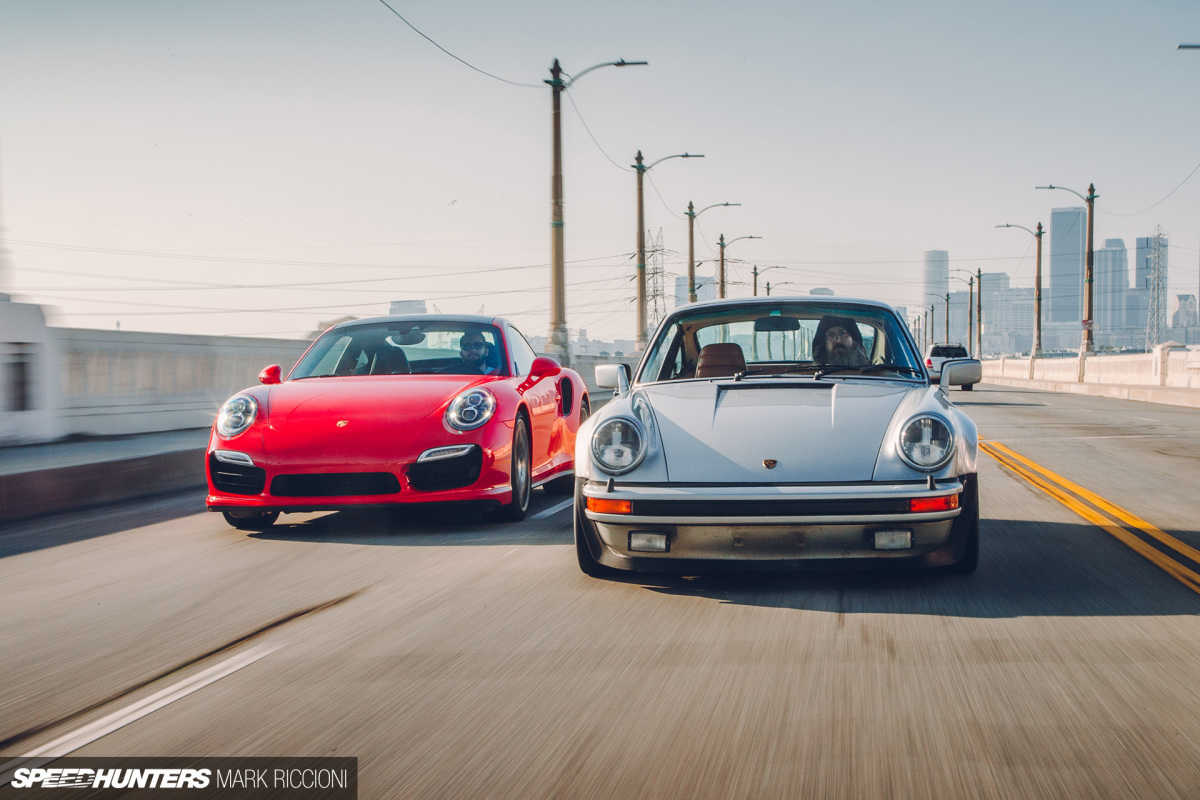
The production 911 Turbo Carrera first broke cover in 1974, and the first journalist test drives followed in 1975. It must have been a really exciting time to be driving. A 3.0 flat-6 delivered 260bhp in an almighty, unrefined surge through a 4-speed gearbox. With a massive wastegate and a gruff engine sound, I can’t think of anything cooler.
Porsche went on to refine the formula in 1978 with the introduction of a 3.3 model. With more elegant styling, better aerodynamics and an intercooled 3.3-litre 911/60 engine, it was arguably better a car. But the original 3.0 will always have a more outlaw, raw edge to it in my mind.
4) 935 Street
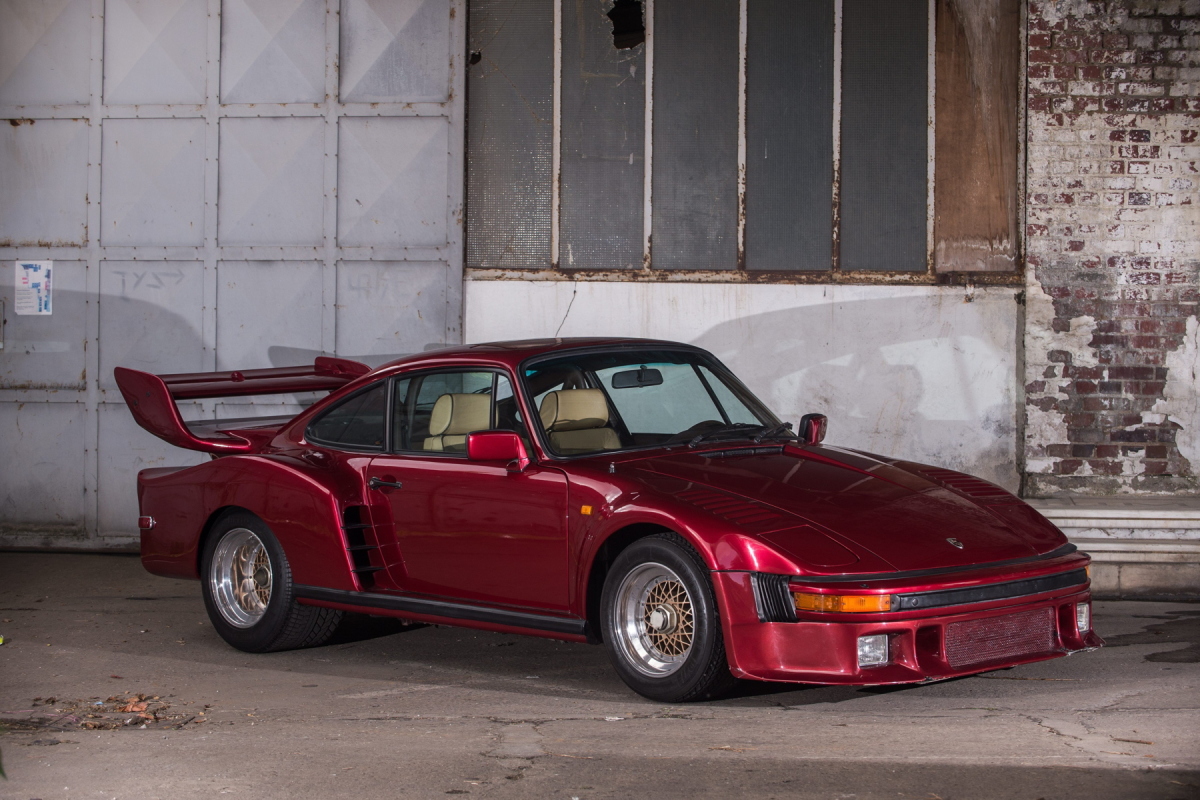
Just one of these things exist, which I think is more than enough to make it worthy of this list. But wait, there’s more. It just doesn’t get more ’80s than this…
Mansour Ojjeh might not be a household name, but his company, Techniques d’Avant Garde (TAG), might be. The Porsche-TAG TTE PO1 1.5-litre twin-turbo V6 is one of the most successful F1 engines going, and when paired with a McLaren chassis it claimed three driver championships and two constructor championships. Not surprising that Mansour’s own Porsche was quite spicy then.
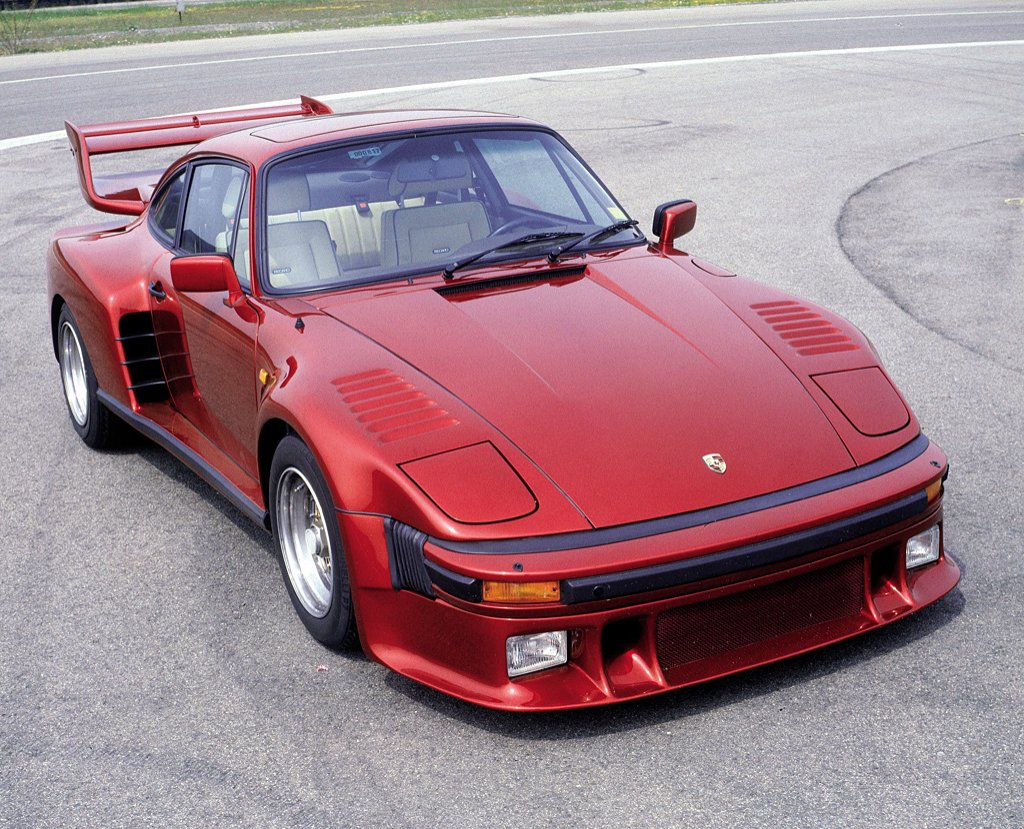
He wanted a 935 for the street and turned to the then new Porsche Special Wishes team to create it. A unsuspecting 930 Turbo was plucked from the production line and fitted with a race-bred 934 3.3 turbo engine, making around 375bhp. The underpinnings and bodywork were all 935, but Mansour wanted the interior to have all the comforts of a road car. Understated two-tone leather and wood veneer couldn’t have been further from a 935’s attitude, but then nor could the one off Brilliant Red paintwork. Somehow it works together effortlessly.
My favourite thing about this turbo Porsche is how it shows just how open to adaptation and individuality Porsche are. It even came from the factory on gold mesh centre-lock wheels. Mr Ojjeh clearly had taste when it came to cars.
5) Dauer 962 Le Mans GT

It was a tough call between this very specific road-going version and the 956/962 race cars. Truth be told, it’s not the car itself that makes the Dauer 962 great, but the story of how it played a role in motorsport history that tickles my fancy. I love a loophole or a little circumnavigation of authority.
In a strange turn of events, the introduction of Dauer’s version of the 962, adapted as road car, meant that Porsche themselves would be eligible to race the 962 again. It led to a resurrection of the Group C racer for use in the ‘new’ BPR Global GT Series, almost five years after the original car hung up its boots.
You see, Group C was for out-and-out race cars. It was a no holds barred, expensive, battle for big-manufacturer supremacy. BRP Global GT was engineered to be the antidote. The idea was for all of the cars to be based on road cars, from the top level GT1 through to GT4. It was supposed to give smaller sports car manufacturers the opportunity to show off their models to a global audience and attract a varied field of entrants.
The trouble is, they didn’t set a figure for how many road cars needed to be produced in order to enter. With the help of Norbert Singer, Dauer achieved TÜV approval for the 962 GT and was eligible for racing in the championship.

Race director for the series Alain Bertaut was said to be less than pleased with the approval, despite not being able to form grounds to oppose it. In Norbert Singer’s autobiography he recalls how Bretaut told him: “This is not in the spirit of the regulations. A GT car should be derived from a road car. This is a racing car that has already won Le Mans many times!”
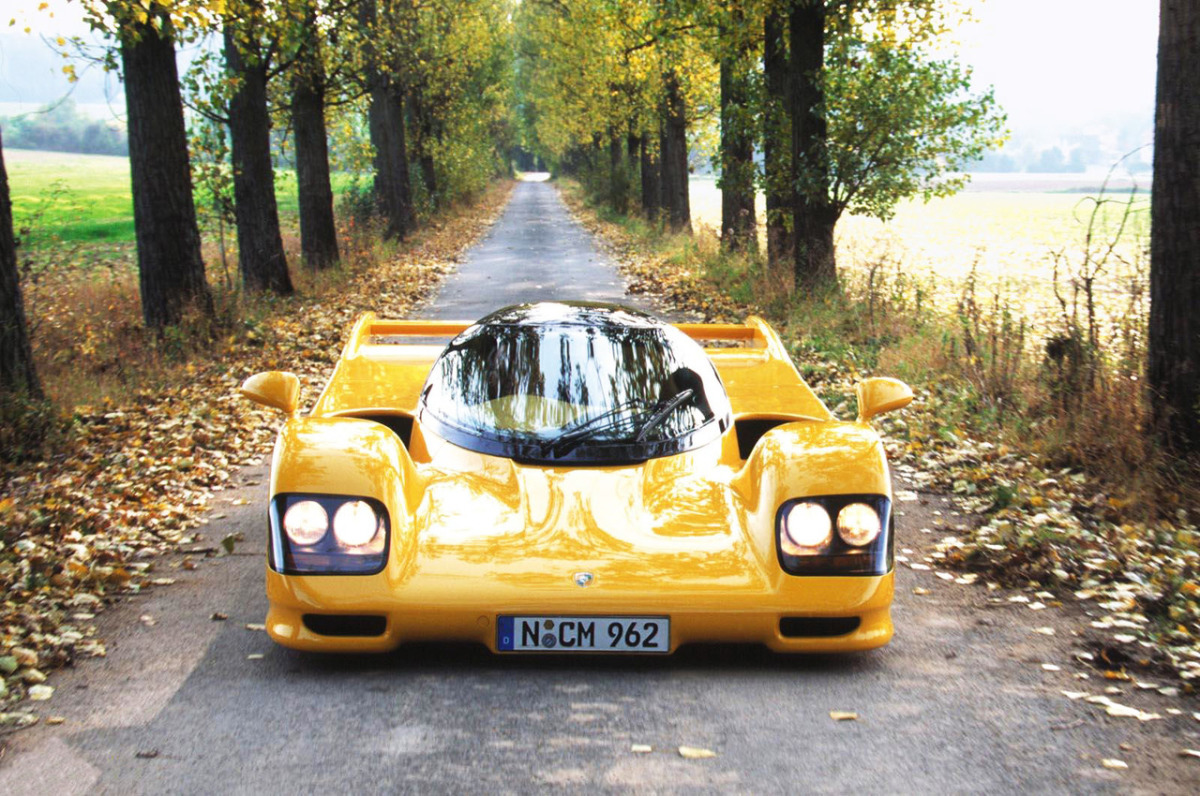
Hurley Haywood drove the Dauer 962 to victory at Le Mans in 1994 wearing a ‘FAT Turbo Express’ livery, which has to be the greatest phrase to ever be applied to the wing of a race car. For the 1995 season the rules were rewritten to include a minimum production number and exclude the 962 so it would no longer be eligible in any form.
6) 964 Turbo S Leichtbau

As the 911 Turbo continued to evolve it moved further away from that early 3.0 Turbo’s attitude. They became more refined, less laggy and more comfortable. It’s a natural evolution for any car, but some Porsche customers were looking for more. By more, I mean less.
This desire was granted by the ‘sonderwunsch man’, Rolf Sprenger and his team at Porsche Special Wishes. The 964 Turbo S ‘leichtbau’ or ‘lightweight’ was their vision of the ultimate drivers’ 964 Turbo. Just 86 examples were built to commemorate the 964 Turbo S2’s IMSA Supercar victories in 1991 and 1992.
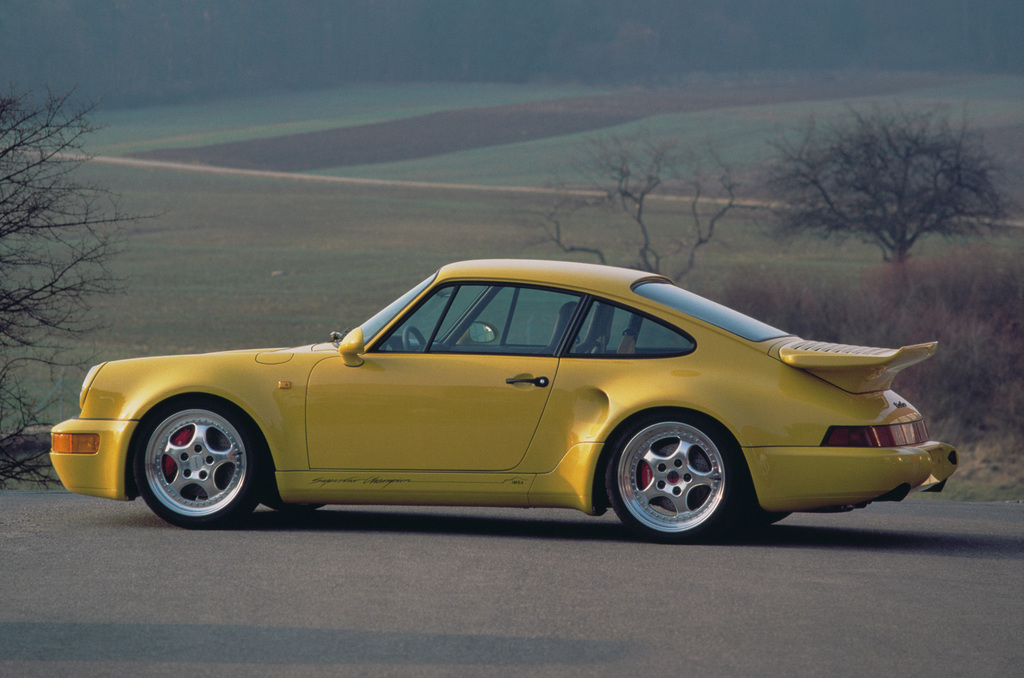
It was far more than a styling or trim exercise, though – the car was 180kgs lighter, 60bhp more powerful, and would do 0-60mph in 4.7 seconds before hitting 180mph. Doors, bonnet and deck lid were all made from carbon composite, the windows were thinner, and the front seats were taken from the 964 RS. To top it off, this was the first 911 Turbo to have side intake vents, a styling cue that is instantly recognisable as ‘Porsche Turbo’ today.
7) 993 GT2
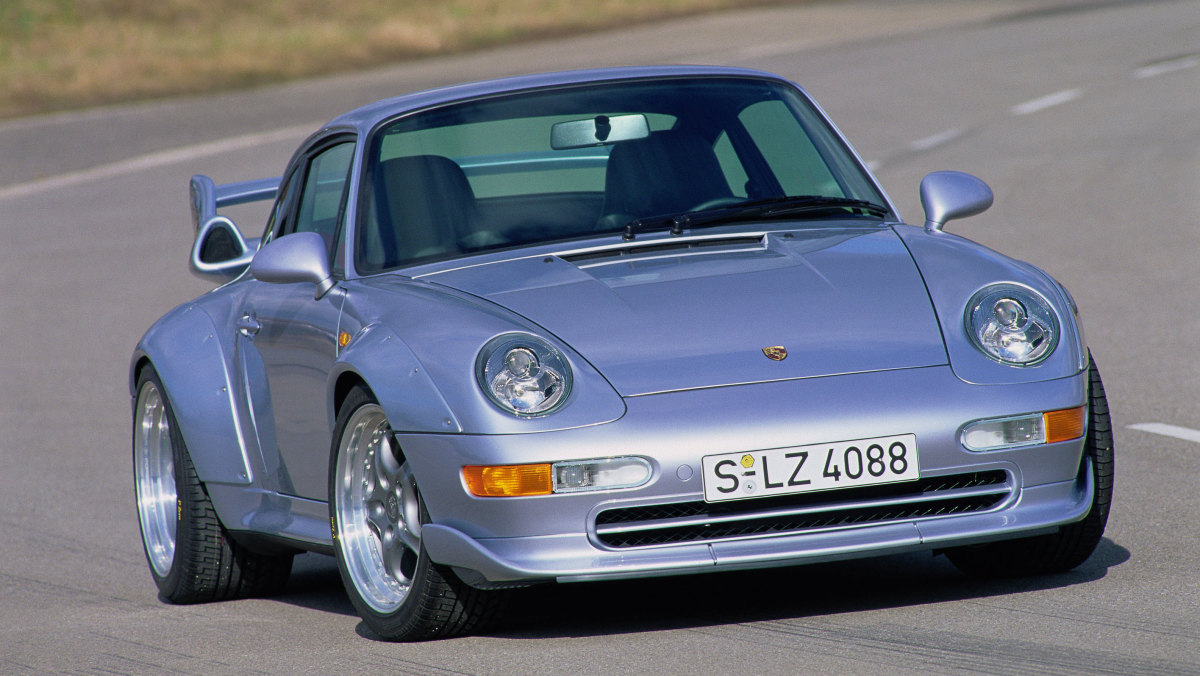
The 993 was the first 911 to be given the GT2 name, although it came badged as ‘911 GT’ on the engine lid. To satisfy BPR endurance homologation, Porsche developed the 993 Turbo into something that could become a competitive race car.
BPR allowed updates for already homologated cars which is why, if your budget allows, you can get your hands on an even spicier 993 GT2. 1996 saw a revised front spoiler, but if you want to really go all-out a 1999 homologation brought the introduction of the 3,800cc M64/84 engine conversion kit. The updates were aimed to allow existing cars to be refreshed to stay competitive, and with 535bhp these cars must have been a real handful.

The later cars, with double-stacked wings and rubber front lips, must be the inspiration for the RAUH-Welt Begriff designs. They are so strikingly similar that I thought there was a white RWB car sat in the Porsche Museum on our last visit. These 993 GT2 EVOs must surely be the most hardcore of all the road car derived 911s.
8) GT1 Strassenversion
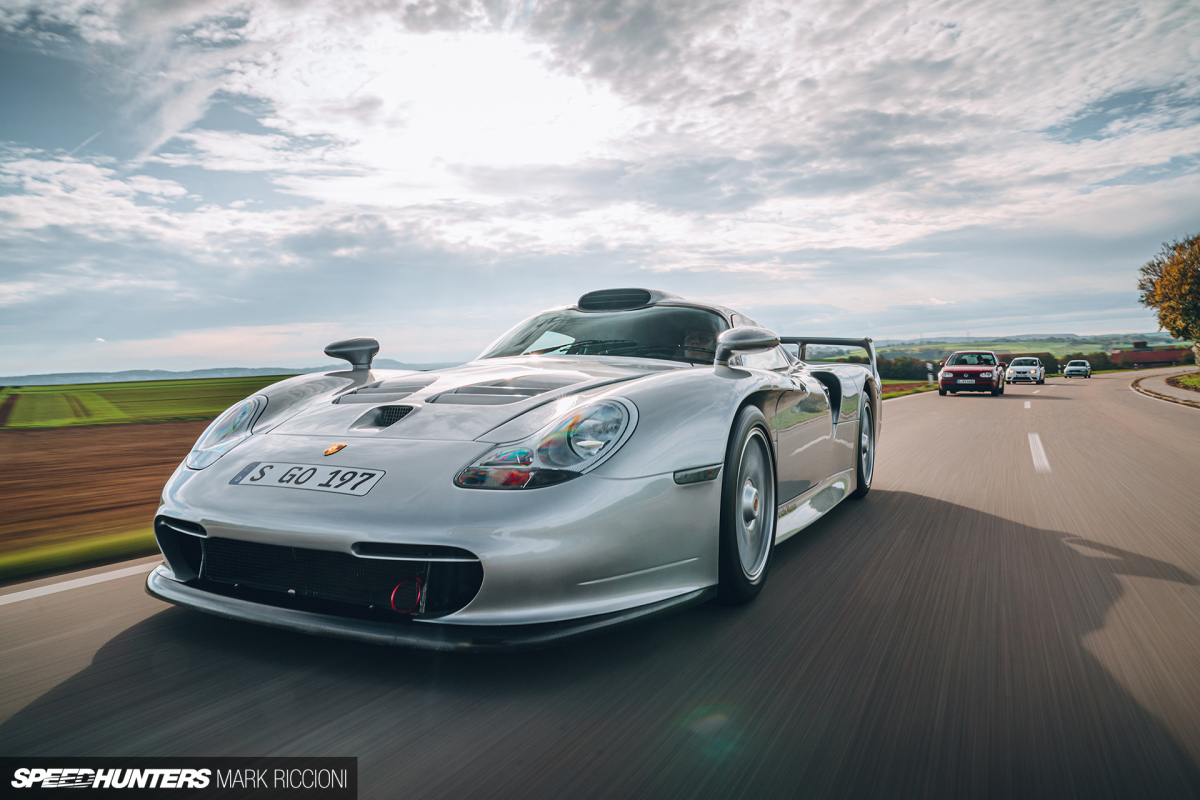
I’m not going to write a terrible amount on this subject, mostly because I’ve exhausted what’s in my brain on it here.
I will, however, leave you with this absolutely savage video of the original 993-shaped GT1 prototype, as tested by Tiff Needell for Top Gear. Make sure you have headphones on or speakers up. It’s an incredibly bouncy, whooshy and terrifyingly fast-looking ride.
9) 996 Turbo
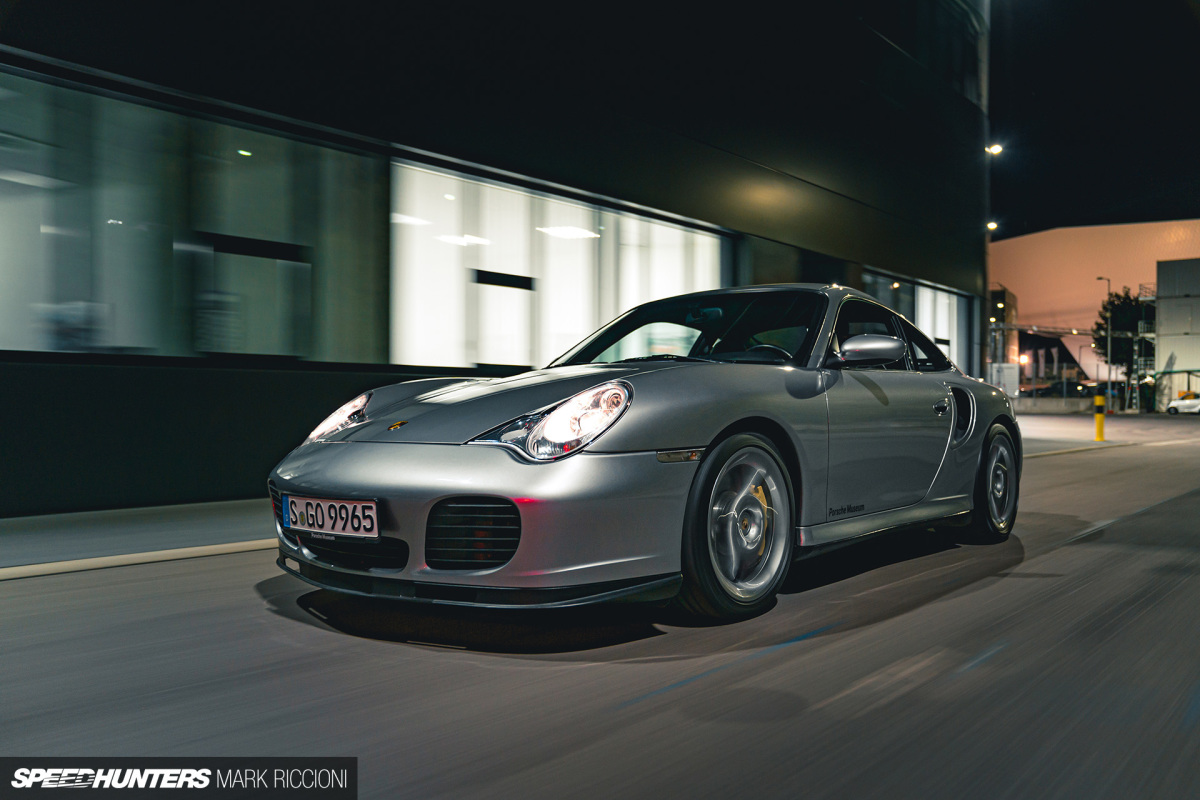
It’s not possible to mention the GT1 without the ‘common as muck’ road car that housed its engine. You’ll hear 996 Turbo owners say they have the GT1s engine in the back of their car, and there’s actually more truth in it than you might first think.
The 996 iteration of the 911 broke new ground for Porsche; it was a real mass production vehicle. For the first time Porsche shared parts across the range, and it made the 911 a much more profitable prospect. In the early stages of 996 model development a Turbo model was not scheduled. It was thought that they simply didn’t need one. The focus was on effectively marketing the new product and actually selling them, a decent attitude for any business.
As a result, the engineers campaigning for the Turbo 996 were denied on several occasions; the cost to develop a turbocharged version of the new M96/01 water-cooled engine was prohibitive. The thing about engineers is they are both inventive and stubborn. This is why they looked to the GT1’s twin-turbocharged ‘Mezger’ engine. It already existed and didn’t need developing from the ground up, just adapting for road use.
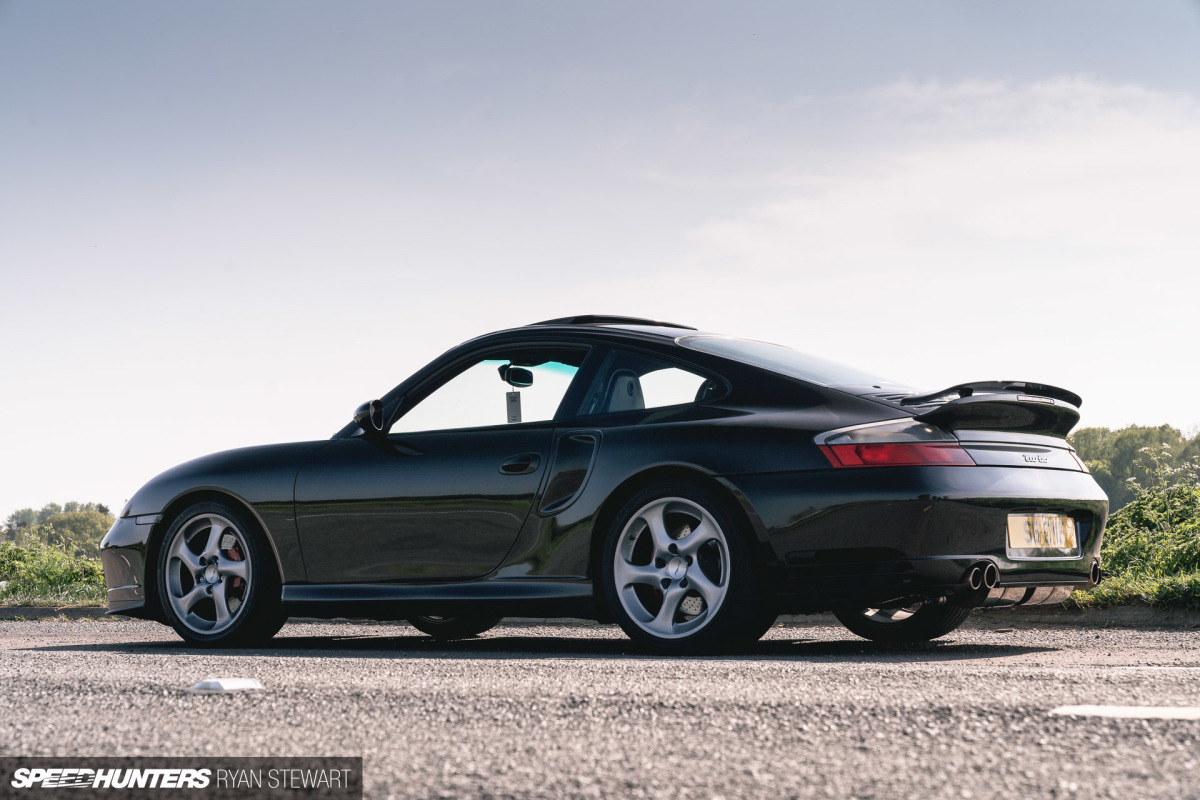
This gave birth to the M96/70, a twin-turbo 420bhp flat-6 with an unparalleled torque spread – 413ft/lb from 2,700-4,600rpm. It also means that the engine is incredibly strong. Over the years Porsche tuners have enjoyed upping the power on this engine with relative ease and reliability. Porsche even gave customers the option of opting for more power and larger turbochargers in the form of the 450bhp ‘X50 Powerpack’ which became standard issue for the 996 Turbo S and GT2.
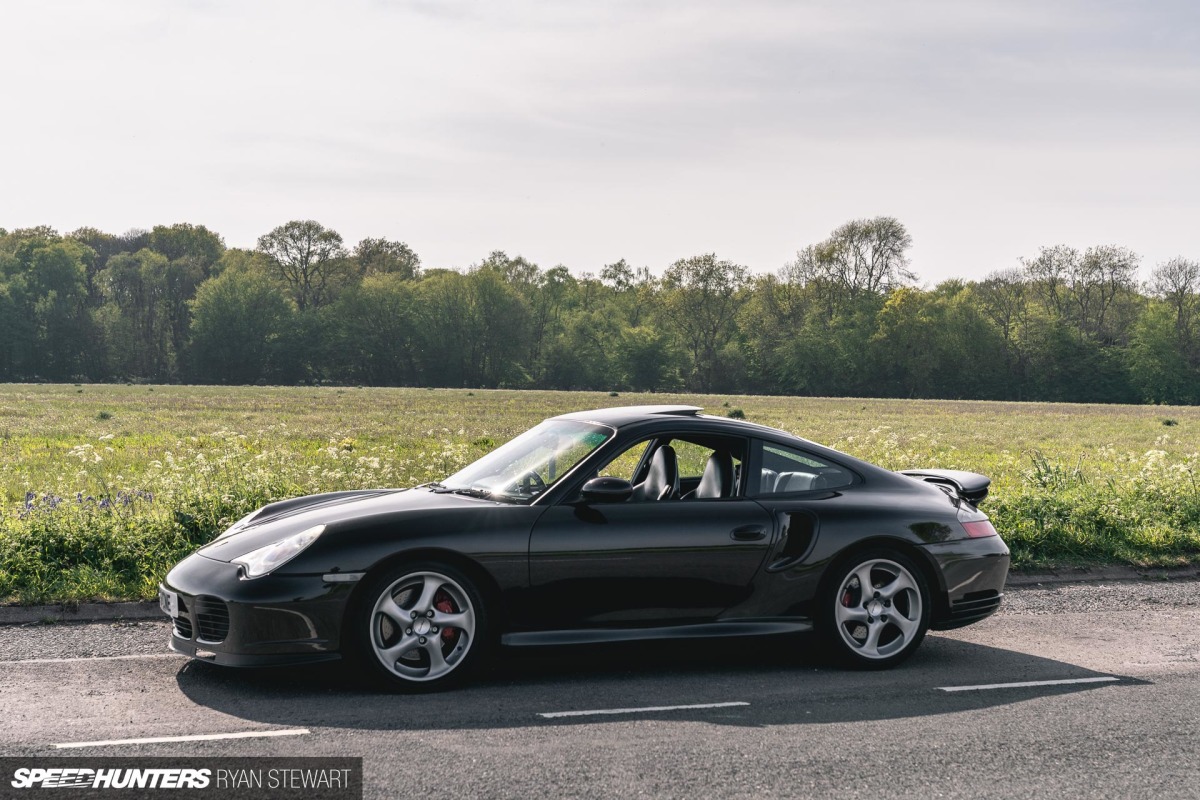
The 996 variant is also the most affordable 911 Turbo you can buy to day, which aside from the lineage is exactly why I have one myself.
10) 997 GT2 RS
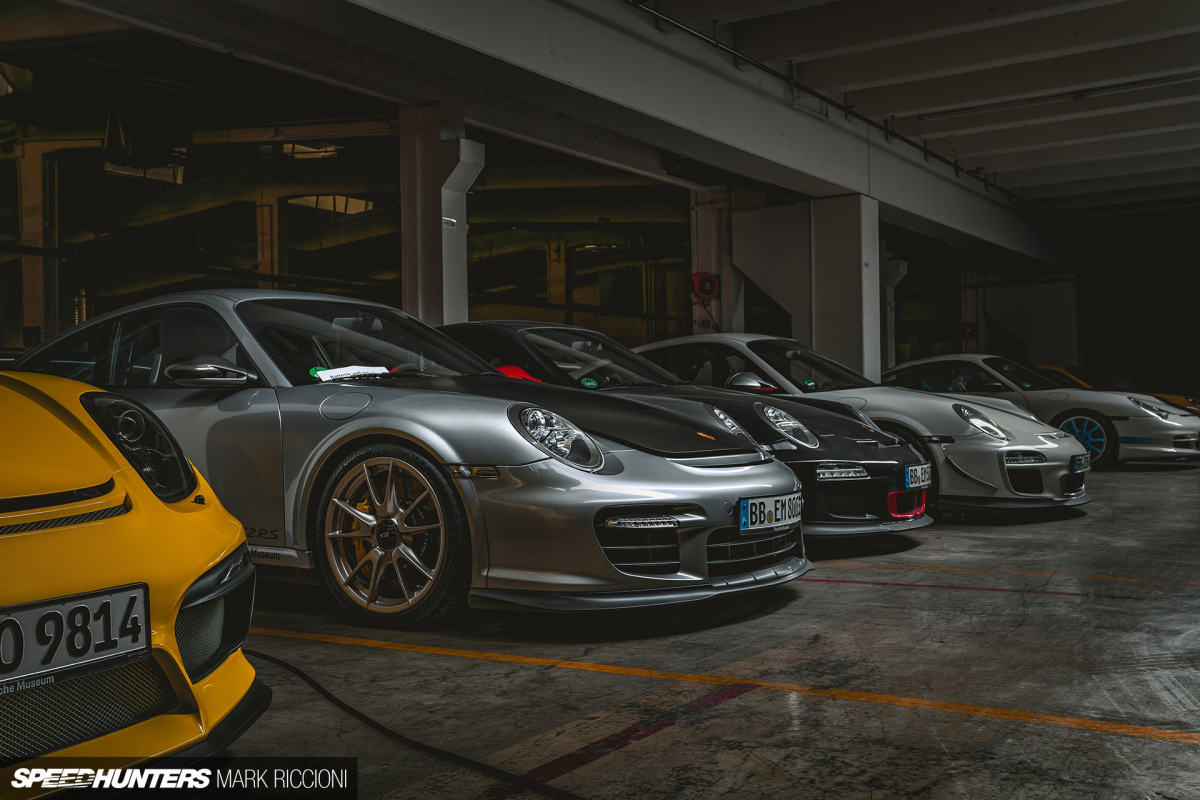
By this point we were familiar with the GT2 badging. We knew what RS meant, but this was the first time the world saw the lightweight ‘RS’ ethos applied to a turbocharged Porsche, creating a GT2 RS with explosive results.
First shown at the Moscow Auto Show in 2010, this 620bhp 997 was a monster. Weissach had taken the GT2 and removed some 70kgs from it; a provocative move that incorporated exotic materials and high horsepower and delivered them to normal road car owners.
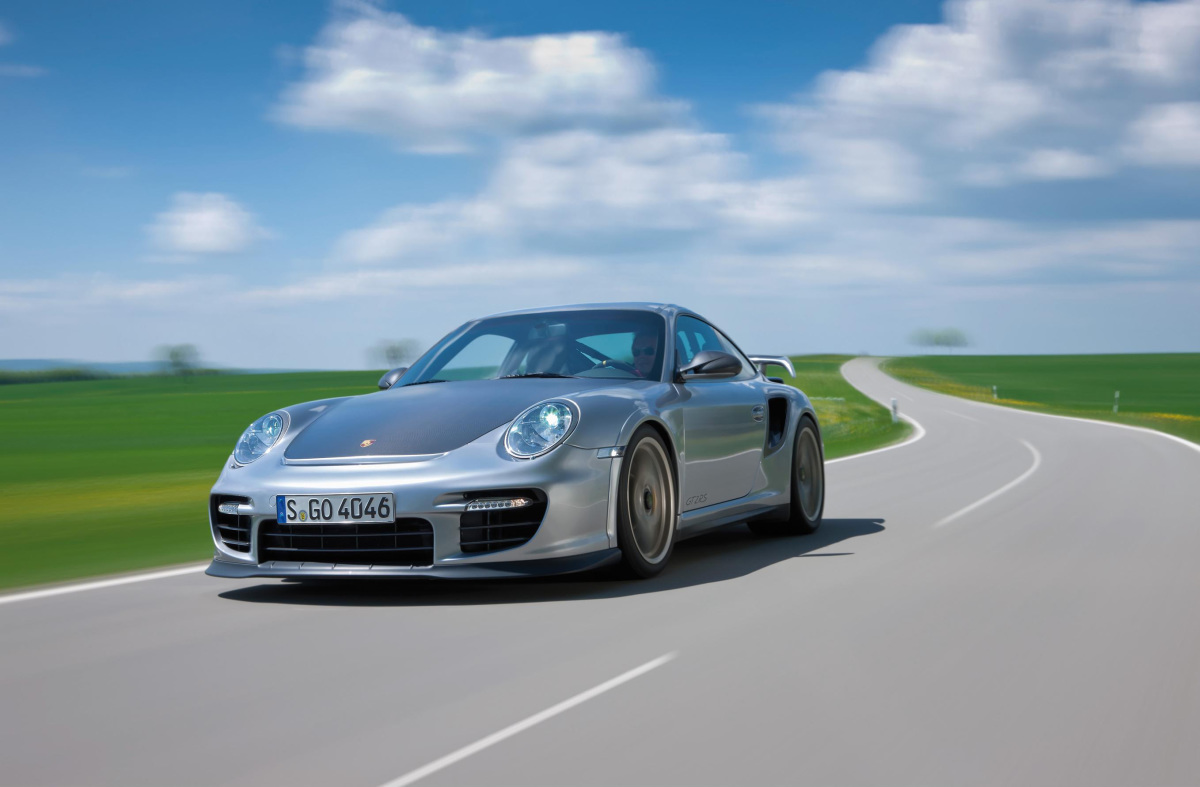
Even with a 6-speed manual gearbox, the 0-60mph time was 3.4 seconds. It was an exercise in brute force. Internally, the car was known by the code number 727, which is said to refer to the Nürburgring lap time to beat: 7mins 27 seconds, set by the Nissan GT-R.
Just 500 of these cars were made and within two months they were completely sold out. Shortly after this it lapped the ‘Ring in 7:18 in stock form at the hands of Timo Kluck. Sadly, you’re unlikely to see a 997 GT2 RS doing what it was designed to do; they are more likely to be found cosseted in collections.
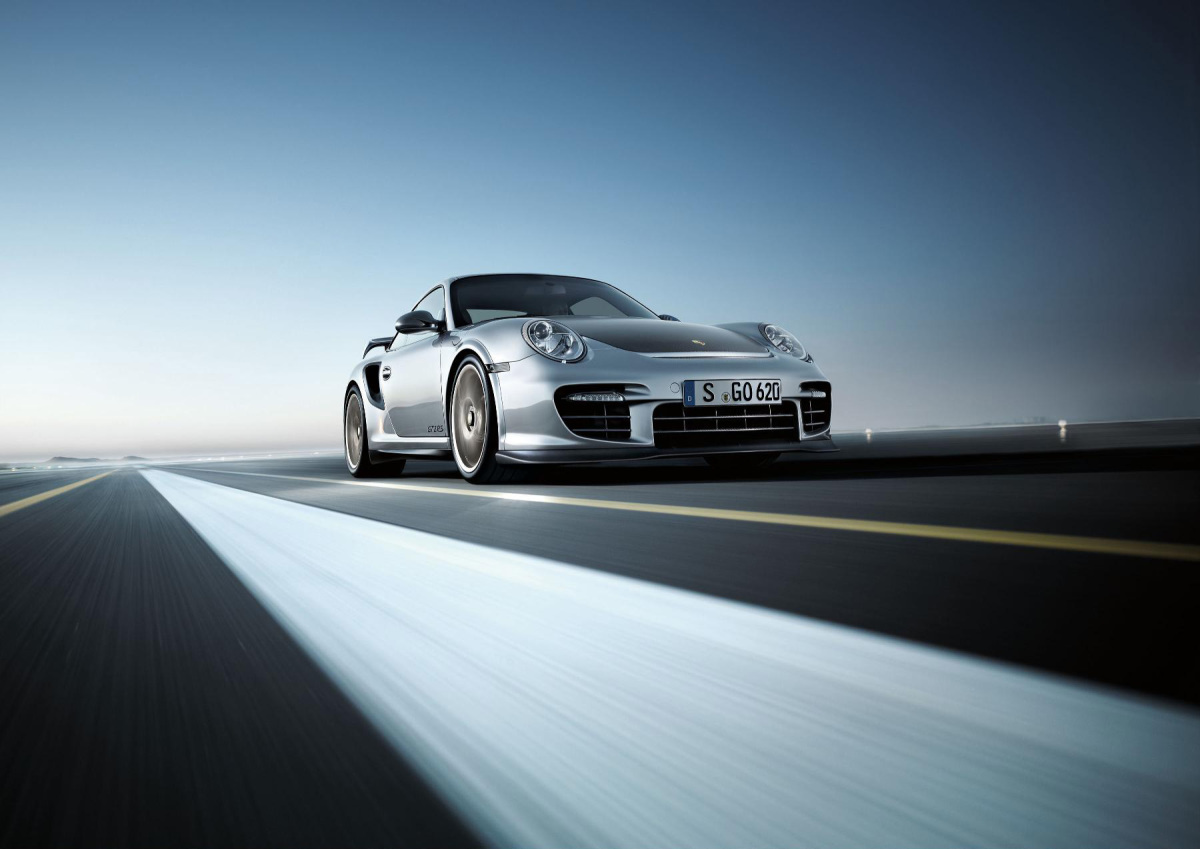
That hasn’t stopped tuners and car enthusiasts taking inspiration from the car and creating their own versions though. Bucket seats, more boost and carbon parts on ‘lesser’ 911 Turbos can create a really wild car. It’s because of the 997 GT3 RS that many see the potential in even the most basic 997 Turbo and seek to unlock the potential of the platform.
Ryan Stewart
Instagram: 7.nth
ryan@speedhunters.com

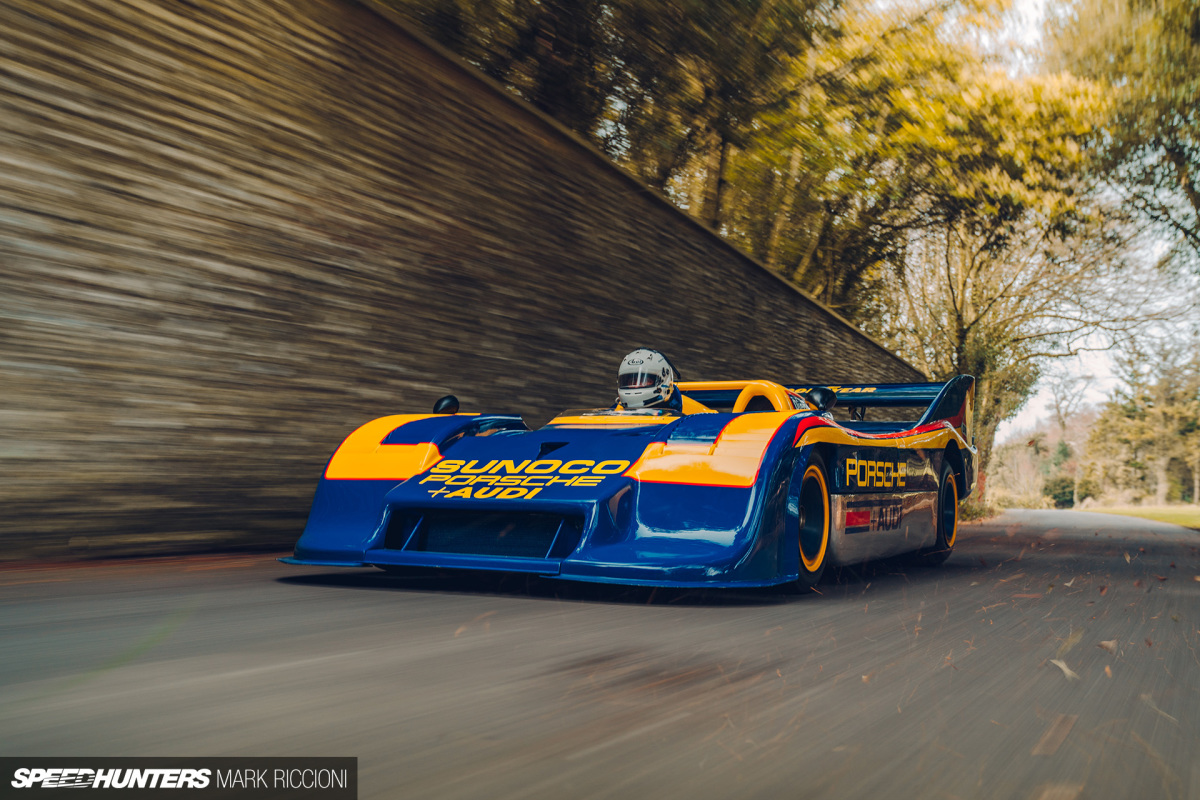
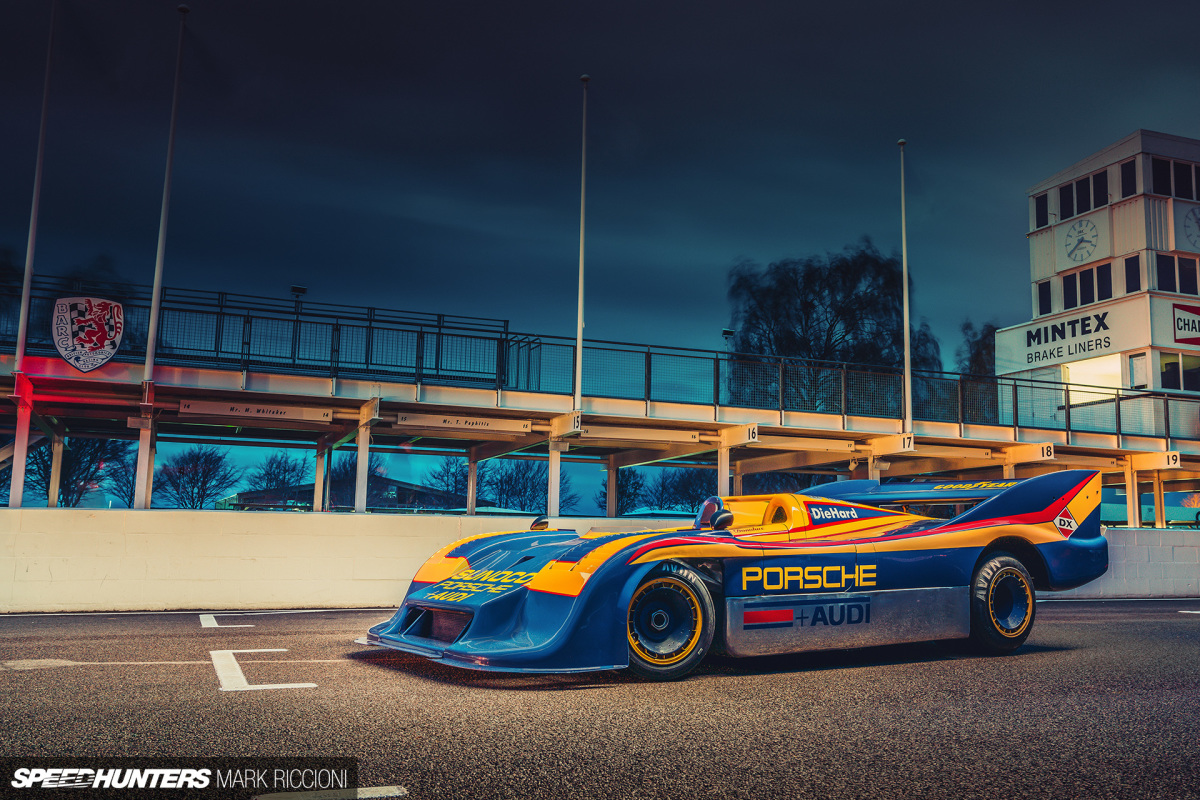
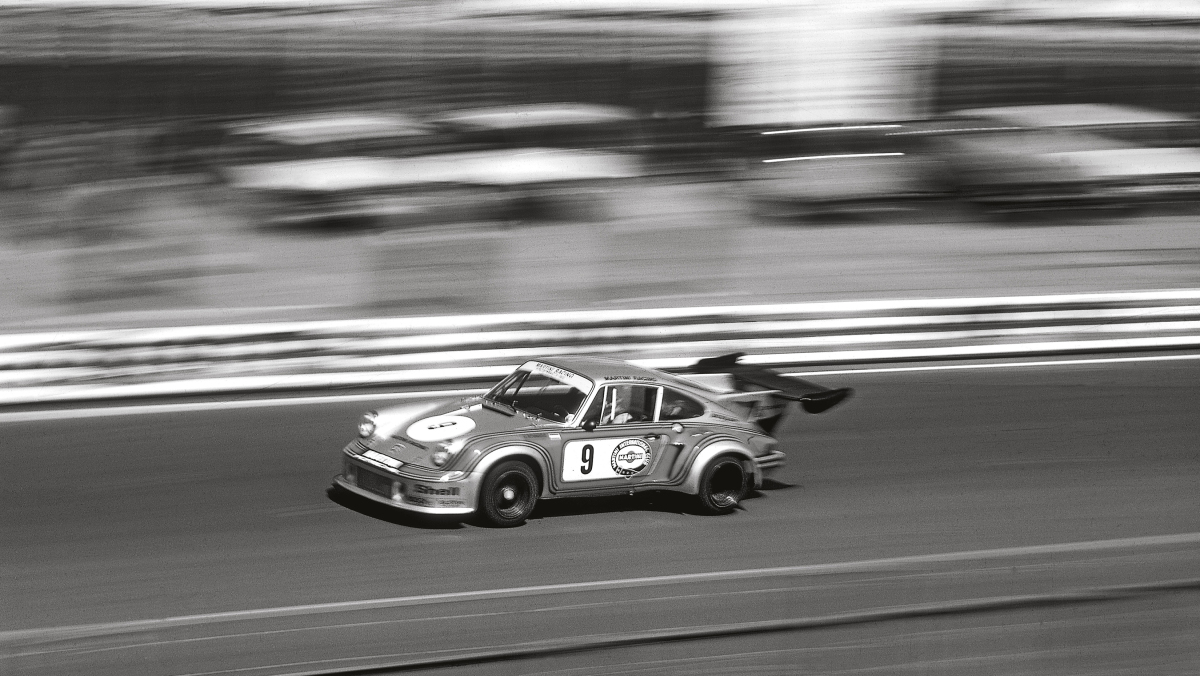
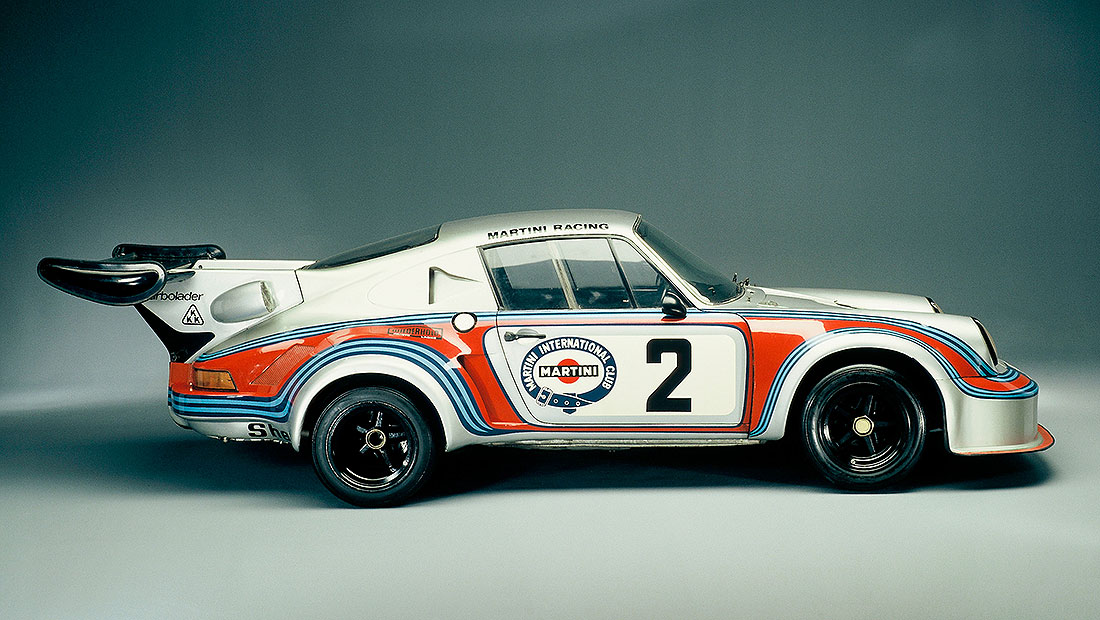
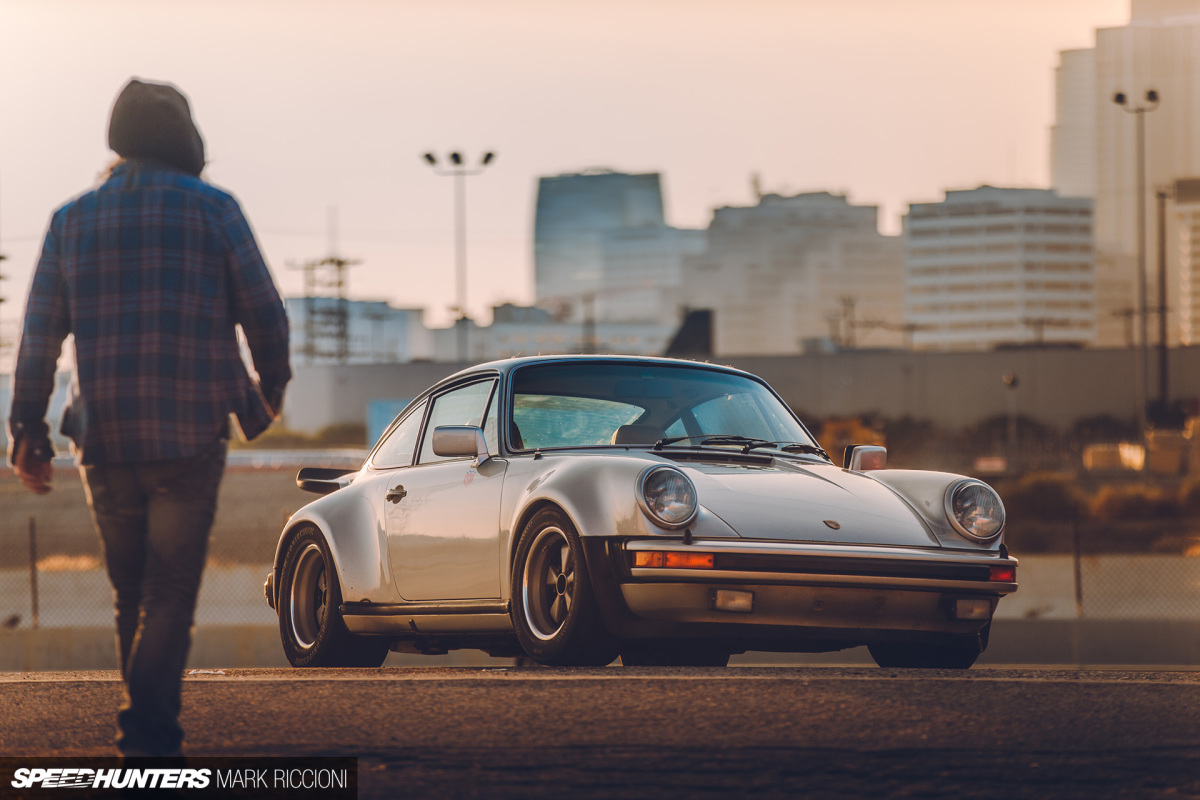
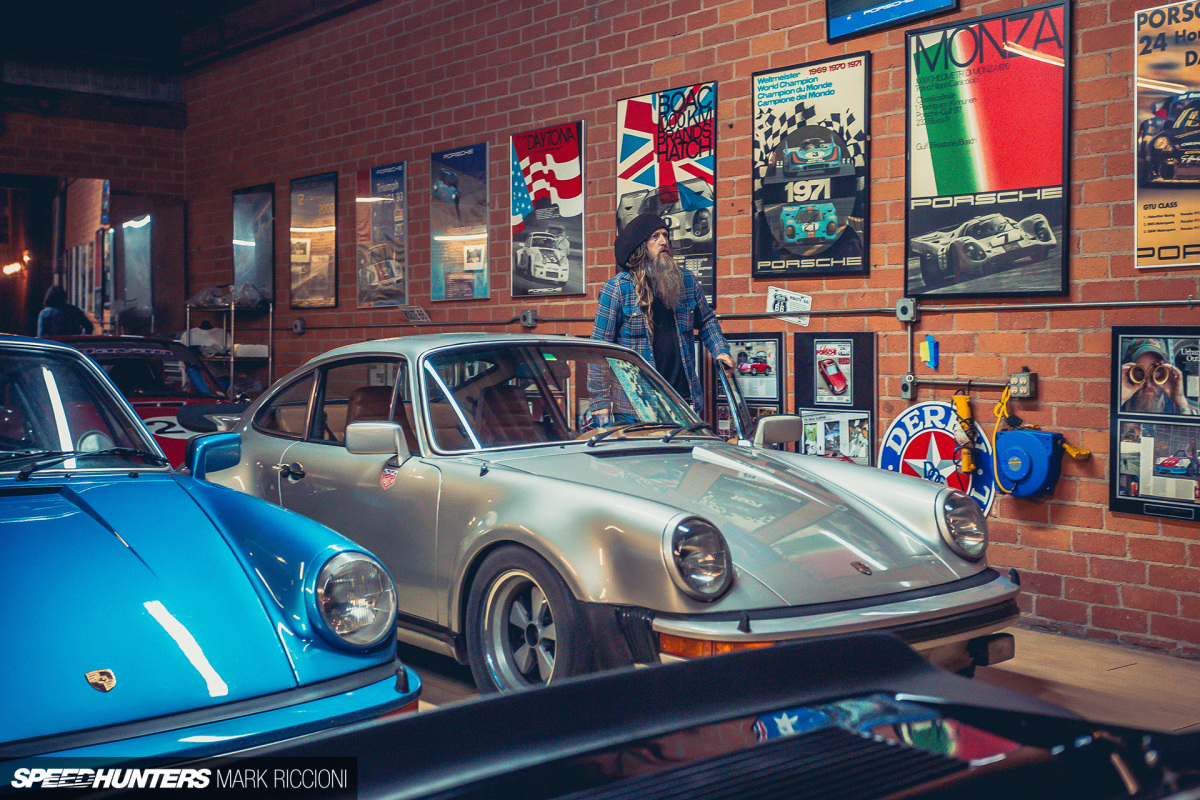
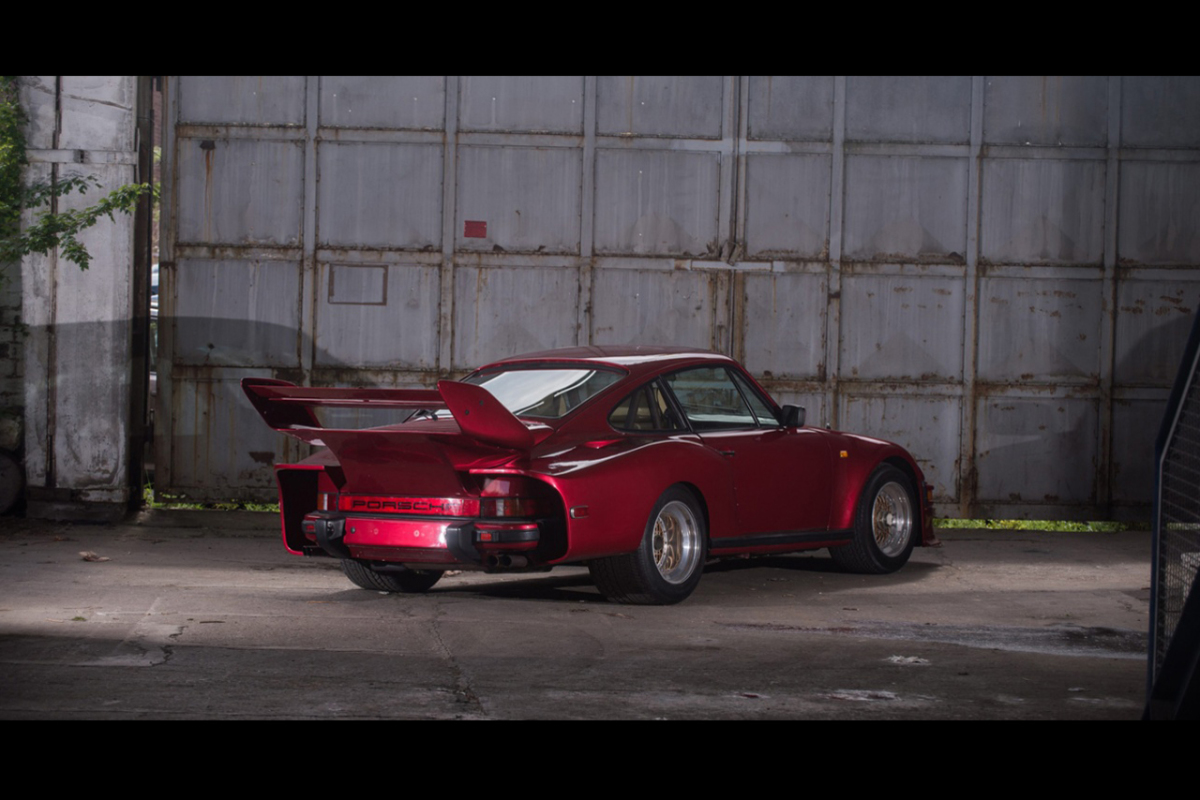
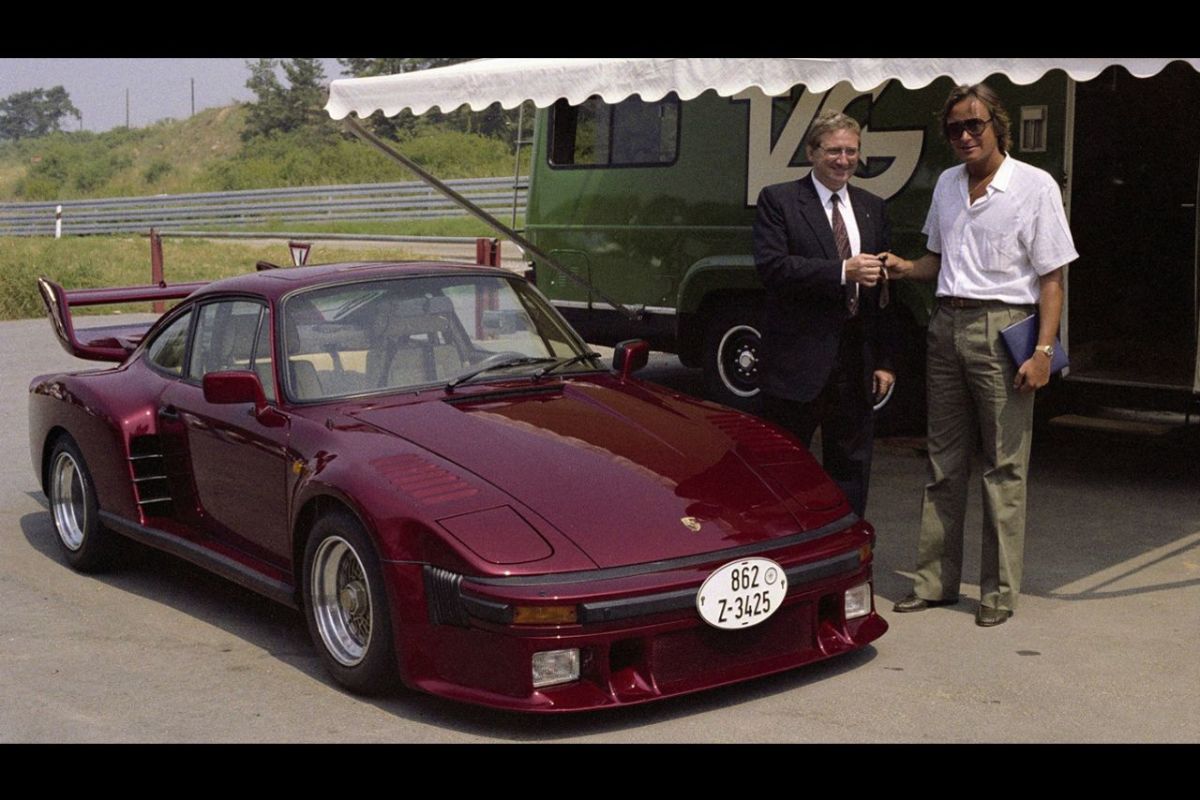
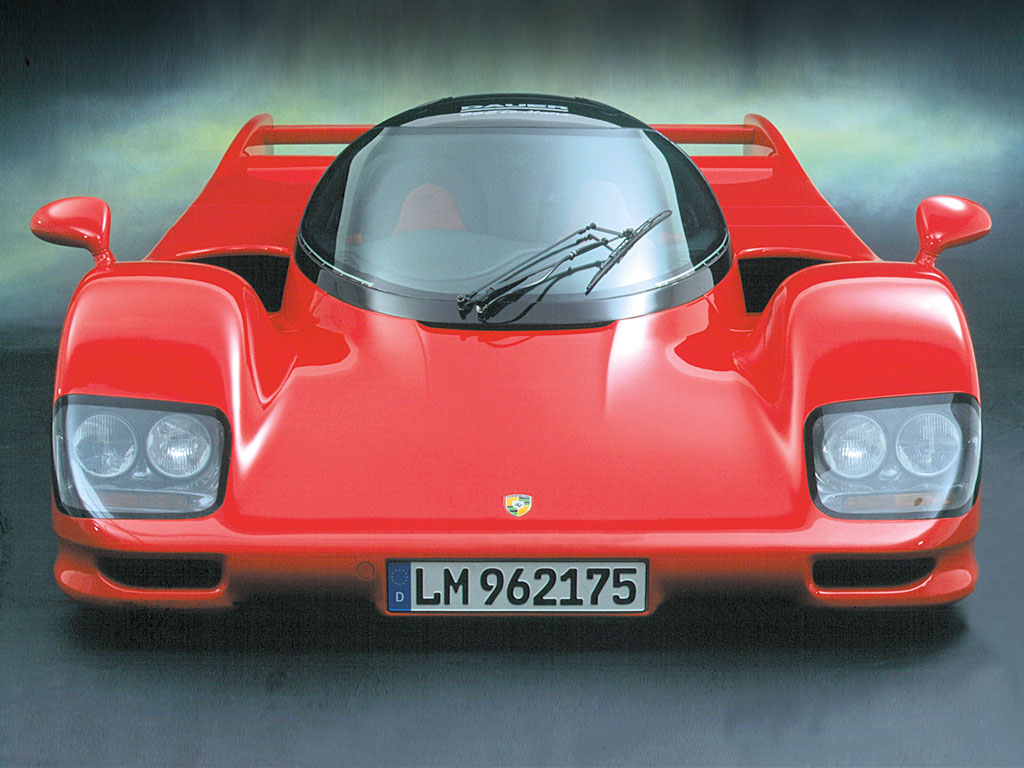

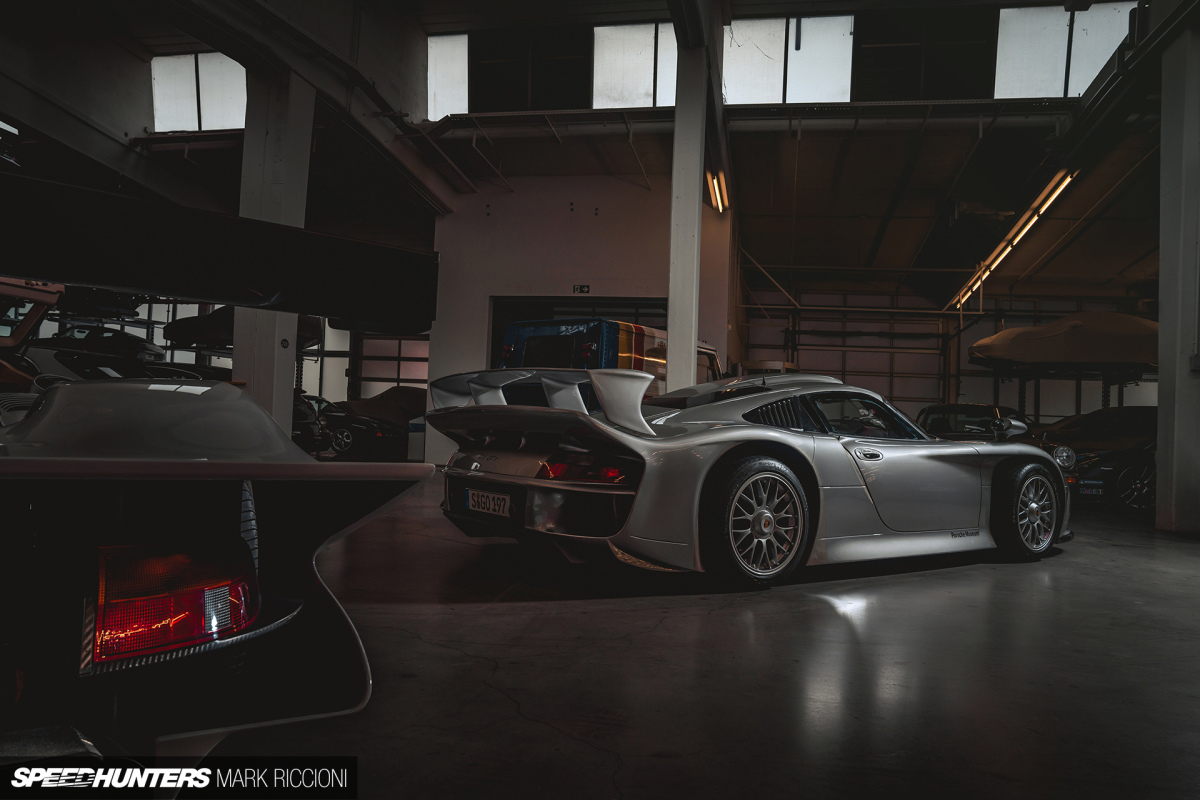
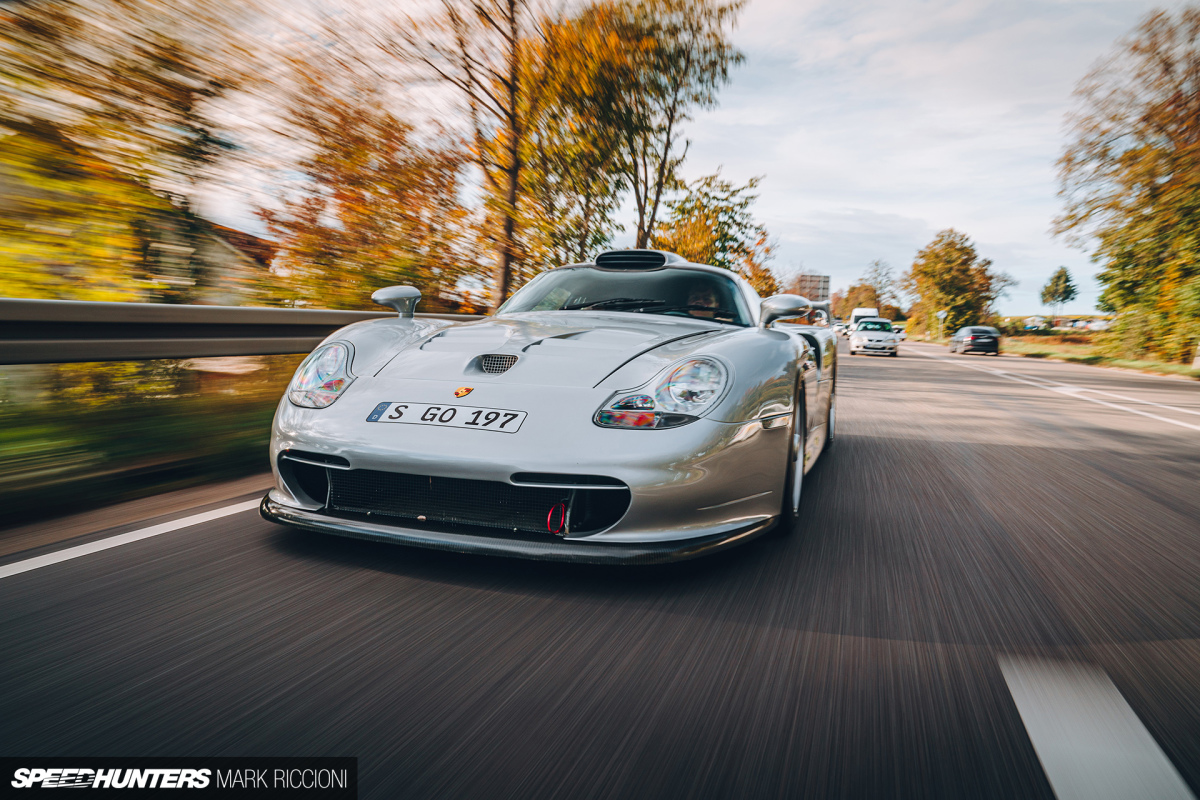





I know it's not the rarest or wildest Turbo model, but my Porsche 'poster car' was an Arctic Silver 996 Turbo. I'd absolutely love to own one of these before they become crazy money.
Boye have I got the car for you... step this way...
On Porsche: I worked with an Oz Porsche Cup team (Power to weight formula) in the 1980’s on a casual basis (before the formal GT3series). We had a road based 930 chassis converted with Kremer 935 suspension and engine tuned for 350kw at close to 500kg weight. Awesome car. Look up Hones Racing...
On road cars, IIRC, Saab introduced the Turbo 99 about 1970, with about 150kw and 225Nm torque. That became 165kw in the 9000t16 in 1986. Mine had 250kw and 350Nm at the wheels via a 4” straight through exhaust/air box conversion on std internals in 1996. I think Autocar said at the time that the T16 was faster to 100mph that a non turbo Carrera in the day.
Saab went on to progress turbos across their range until GM got in the way...
Enjoyed your article though. Thank you.
The original 99 Turbo only had 107 kW, which at the time was a lot.
Saab used to advertise the 9000 turbo to be faster than Testarossa and 911 (which was true for 80-120 km/h in fifth gear)
Glad you enjoyed the article, great to hear! Didn't find anything on a Google search of Hones Racing, have you got any pictures? It sounds nuts!
Ryan,
Been waiting for this article. Actually any article on Porsche gets me going. I am a Porschefile for life! Just saw a red, 2018 GT3 on the Parkway here in New Jersey today. God I love Porsche! My favs are: 1973 Carrera RS, 993 Twin turbo, 993 EVO and the 997 GT3. Doesn't matter turbo or not. That's my short list. Porsches are freaking INCREDIBLE! That 962 LeMans GT is nnnnniiiiccccceeee.
Great to hear from you David! That's a great list. I didn't appreciate the 993 Turbo enough until recently. There was a guards red one at out last Manthey-Racing visit that tipped me over the edge.
As always, fantastic article with great info and photos! I guess we can't say the same for other super car manufacturers.
Turbo Porsches, but no 959??
Correct, for me the 959 is too obvious a choice and in reality it was not successful at the task it was intended for. It was a car that did not fulfil its destiny, it was handicapped by circumstance, through no fault of its own. It is indeed a great car, but I wanted to save space to tell the stories of some others I like more.
There is a local gentleman who attends cars and coffee (in the before times) with his 997 GT2RS. Most times he doesn't bother to remove the number decals from track days at VIR.
This is the sort of energy I need in my life. What a guy.
weird, i expected an advertisement article for nfs remastered by now
I'd love to see Need for Speed: Porsche Unleashed remastered
Old or new, Porsche still makes the best sports car
Porsche is one of the first cars that got me into cars when I was a small kid
Now I love Porsche even more
I love all cars, weird and wonderful, from a Vauxhall Nova to a Mclaren F1. They're all designed for different uses, audiences and price points. Porsche does do an exceptional job at creating useable every day sports cars though, and that is a real joy.
Me too!
*Heavy breathing*
Not to mention that most of the people that attend H20i are 18 themselves. It kinda sucks to see car culture turned into a joke by a bunch of kids wearing supreme shirts doing burnouts in a a slammed (nameless car). H20i isn't a car meet, its an Instagram convention......jobztip.com$$$$$
I think you clicked the wrong story to comment on - I think you're looking for Keiron's H20i one